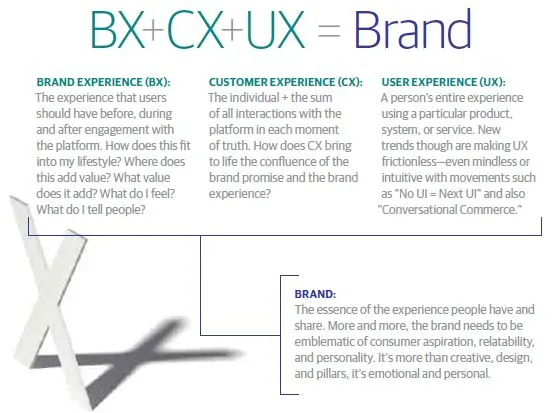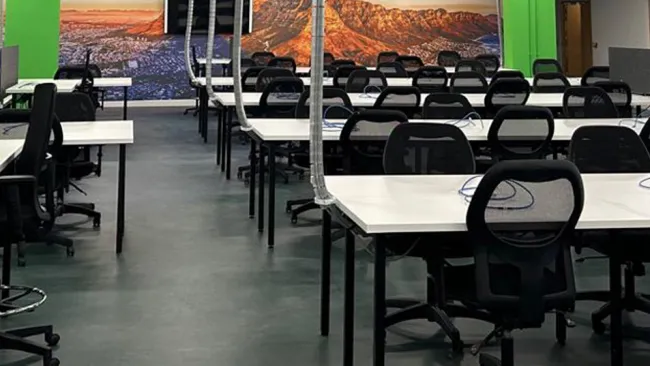Products don’t define a brand, experiences do. Such is the reality of modern business, where people are connected to a constant flow of information and are defining brands based on what they experience and share. Simply put, brands are increasingly defined by those who experience them.
Brian Solis, futurist and author of X: The Experience When Business Meets Design, explains why the future of business is experiential and how to create meaningful experiences. We sat down with Solis to learn how businesses can begin to transform the customer experience.
Customer Strategist: In your book, you mention that technology is most human when it is invisible. Can you elaborate on that?
Brian Solis: When designing experiences, we have to first consider intent, desired outcomes, and also what customers value in their life. The key is to then design experiences where technology takes a supportive role, allowing users to seamlessly and intuitively take their next steps. Often, companies place an emphasis on technology-first solutions and stacking them on legacy platforms and methodologies.
But technology is most human when it’s invisible. Yet companies try to stuff everything under the sun into their devices, sites, apps, forms, etc., without consideration for the users’ experience, let alone their goals and aspirations. Users, I mean people, shouldn’t have to think about the UI, the device, or be forced to navigate the chaos of choice.
If you look at Google, Apple, or some of the most elegant experiences on the planet, they’re incredibly simple even though the technology powering each experience is incredibly sophisticated and complex. This takes resolve, vision, and the desire to make the complex intuitive. Don’t make people do the hard work. Innovation in experience design is all the work you do to conform to expectations and aspirations of people as they evolve, instead of making them conform to your legacy perspectives, assumptions, processes, and metrics of success.
CS: Where do brands tend to stumble when trying to implement human-centered design?
BS: This is going to sound trite, but after years of research, this is truer more often than not…companies are not customer-centric even though many believe they are. If anything, this is something more aspirational than real. The truth is that companies are shareholder-centric or stakeholder-centric. I should be clear though. I’ve never heard an executive say, “You know, Brian, we really don’t care about our customers.” I believe that whether it’s value, performance, aesthetic, competitiveness, etc., companies are trying to do what they feel is right by customers. But, when it comes to human-centered design, we have to fully appreciate the human beings who go through life differently than our strategies, processes, systems, and roadmaps allow or consider.
If you think about it, what’s the definition of experience? Experience is something you feel, something you sense and interpret and, more importantly, what you commit to memory, either good or bad. You won’t remember those moments otherwise.
Brands don’t know their customers and how they’re evolving. To truly embrace human-centered design, brands must think beyond the traditional quarterly focus and think about what matters to “humans.” The most successful brands in experience design prioritize people (of course) because otherwise nothing else matters in the long term.
From there, brands have to invest in more than just journey mapping. They need to understand intent, context, and activities. And more so, evolved values, behaviors, desires, motivations and emotions. This isn’t just updating touchpoints. This isn’t just implementing trends. This is about understanding what you’re absolutely missing. You are not your customer. Your executives don’t live the brand or live life like the people you used to know (or think you know). The direction and evolution of human beings change course as technology influences and enables new possibilities while making previous habits or processes obsolete.

CS: You also point out that business experiences, customer experiences, and user experiences are rarely integrated. What advice would you give to companies on how to collaborate to integrate these disciplines?
BS: There are many disparate tracks within companies designing and delivering experiences today. The key to optimizing what the customer experiences in each moment of truth throughout the lifecycle is having these efforts not only work together, but also execute against a vision and sense of purpose. You have to first define what are meaningful experiences for a new generation of customers and employees.
Then you must design them for each moment of truth to come to life independently and then holistically. Remember, customer experience isn’t or shouldn’t be measured in one moment. Customer experience is defined by how a customer experiences your business throughout his or her journey. It’s measured as the sum of every moment of truth. Yet most businesses are attacking CX irrespective of the overall desired experience, if it’s even been defined or designed, and leaving it to business units and departments to solve independently. At best, some work well, others don’t, and none will ever be truly unified.
Customer experience is an investment in reshaping business models that help companies compete for different times. Unfortunately, many executives who are shareholder-centric see this work not as an investment, but as a cost center and thus, a loss to potential margins and profitability. Those companies that invest in experience design and new business models, processes, systems, and metrics will ultimately outperform businesses that focus on the bottom line.
CS: How do you see experience design evolving over the next few years?
BS: If you think about it, the best experiences you have are with you forever—just like bad experiences. You’ll never forget them. They are powerful because they ultimately become memories, and as human beings, we have on-demand access to them via our limbic system, which is the control center for our emotions. Businesses leave something so powerful as experiences and memories to chance today. Successful companies will go beyond brand, creative, and innovation to invest in enterprise-wide experience architecture and design. It takes a unified approach that unites brand experience, customer experience, user experience, and other disparate disciplines to design and deliver experiences that people love and can’t live without in every touchpoint. ?

















